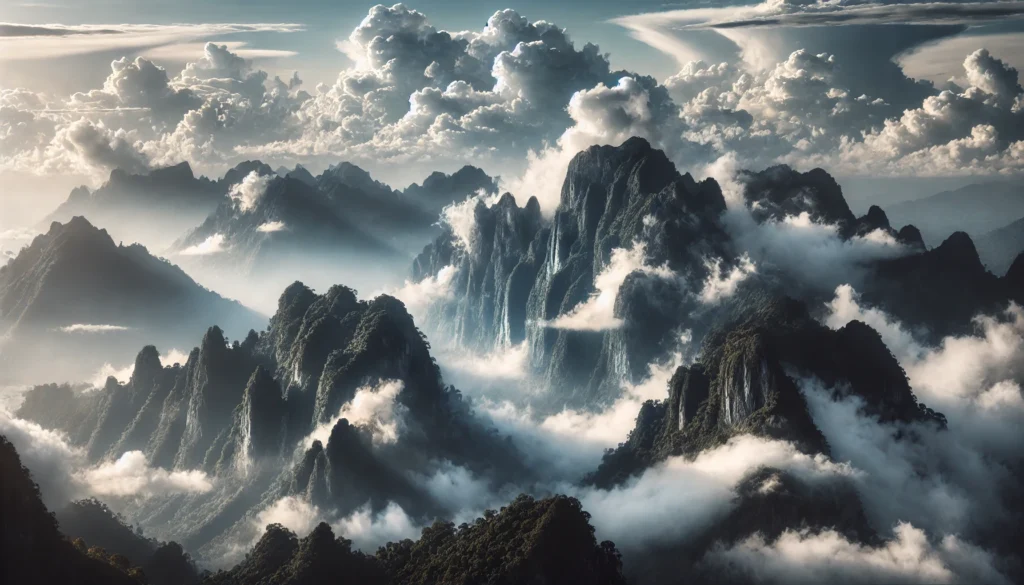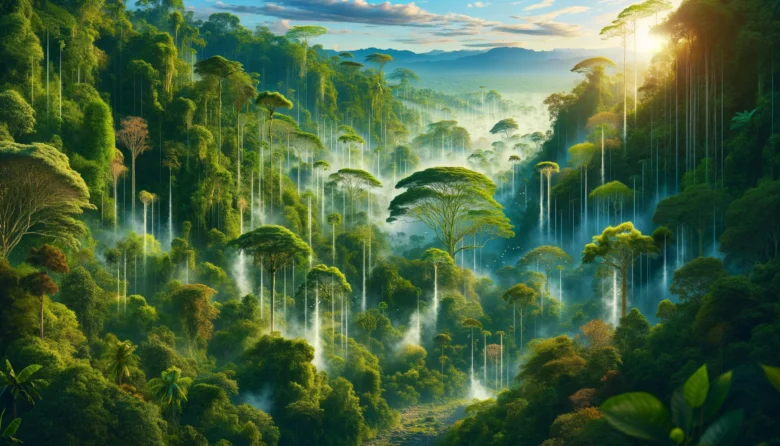Water is everywhere. Whether it’s the ocean waves crashing on the shore, rain pouring down from the sky, or the mist rising from the morning dew, the water cycle plays a vital role in maintaining Earth’s climate system. But have you ever wondered how this cycle works and why it’s so crucial for life on our planet? In this blog, we’ll dive into the intricacies of the water cycle, how it functions, and why it holds such significance in the larger picture of climate regulation.
What Is the Water Cycle?
The water cycle, or hydrological cycle, is nature’s way of recycling water across various states – liquid, gas, and solid. It’s a continuous movement of water on, above, and below the surface of the Earth. The cycle includes key processes like evaporation, condensation, precipitation, and collection. These processes happen every day, yet many of us don’t realize just how essential they are in regulating Earth’s climate.
Evaporation occurs when water from oceans, rivers, and lakes turns into vapour due to the sun’s heat. This vapour then rises and cools in the atmosphere, leading to condensation – the formation of clouds. Eventually, water droplets gather, and when the clouds can no longer hold them, precipitation happens in the form of rain, snow, or sleet. The water returns to the ground, completing the cycle.
But this is just the tip of the iceberg (no pun intended). Let’s explore the critical ways the water cycle influences Earth’s climate.
The Water Cycle: A Climate Regulator
Temperature Control
One of the most significant roles of the water cycle is controlling global temperatures. When water evaporates from the Earth’s surface, it absorbs heat, cooling the environment. Conversely, when water vapour condenses into clouds and falls as precipitation, heat is released back into the atmosphere. This continuous exchange of energy helps to moderate the temperature of both land and ocean environments, preventing extreme temperature fluctuations.
For instance, coastal areas often experience milder weather compared to inland regions, thanks to the water cycle. The ocean absorbs heat during the day and releases it slowly at night, keeping temperatures stable. This is why cities near the sea, like Mumbai, tend to have warmer winters and cooler summers compared to places farther inland.

Moisture Distribution
The water cycle also plays a critical role in distributing moisture around the globe. Through precipitation, water is carried to areas that need it, such as arid regions. A great example of this is the Indian monsoon system. Every year, the monsoon brings life-giving rain to much of the Indian subcontinent, supporting agriculture and replenishing water supplies. Without this essential mechanism, much of India could face severe droughts.
However, climate change is disrupting this balance. Increased temperatures are leading to more intense and unpredictable weather patterns, including droughts and floods. A perfect example is the changing monsoon patterns in India, where the timing and intensity of rainfall have become increasingly erratic, affecting crops and livelihoods.
Cloud Formation and Climate Impact
Clouds may seem like simple sky decorations, but they play a profound role in climate control. Clouds reflect sunlight back into space, cooling the Earth. They also trap heat, acting as a blanket that keeps the planet warm during the night. The water cycle plays a crucial role in the continual formation and breakdown of clouds, affecting how much solar energy reaches Earth’s surface.
In recent years, scientists have noticed shifts in cloud cover due to changes in the water cycle caused by global warming. High-altitude clouds are becoming more prevalent, trapping more heat in the atmosphere and contributing to the warming of the planet.
Role in Carbon Sequestration
The water cycle also indirectly impacts another key player in the climate system: carbon. Oceans, which are part of the water cycle, act as a massive carbon sink. They take in approximately 25% of the carbon dioxide (CO₂) that we release into the atmosphere. This process helps to regulate the amount of greenhouse gases present, preventing extreme warming.
However, as global temperatures rise, the oceans are absorbing more heat. This not only affects marine ecosystems but also reduces their ability to store carbon, creating a feedback loop that accelerates climate change.
Human Impact on the Water Cycle and Climate
Human activities are significantly altering the natural water cycle. Urbanization, deforestation, and the burning of fossil fuels are just a few of the ways we’re disrupting this delicate balance. One major impact is through deforestation, which reduces the amount of water that trees release into the atmosphere through a process called transpiration. Fewer trees mean less moisture in the air, disrupting local weather patterns and contributing to droughts.
Furthermore, the melting of polar ice caps due to rising global temperatures is another result of human actions that significantly affects the water cycle. As ice melts, it adds freshwater to the oceans, contributing to rising sea levels. These changes not only affect the water cycle but also have devastating consequences for low-lying coastal regions around the world.
Case Study: The Amazon Rainforest and the Water Cycle
The Amazon Rainforest, often referred to as the “lungs of the planet,” is a key player in the global water cycle. The trees in the Amazon release massive amounts of water vapour through transpiration, which helps form clouds and sustain rainfall in the region. This moisture not only supports local ecosystems but also impacts weather patterns far beyond South America.
However, rampant deforestation in the Amazon is disrupting this system. Without enough trees to recycle water, the region risks experiencing less rainfall, which could eventually transform the rainforest into a savanna. This would not only harm biodiversity but also release large amounts of stored carbon into the air, intensifying global warming.
Conclusion: The Water Cycle and Our Future
The water cycle is more than just a natural process – it’s a life-support system for Earth’s climate. It moderates temperatures, distributes moisture, and even plays a role in regulating the planet’s carbon levels. However, human actions are threatening this delicate balance. If we don’t take significant steps to address climate change and protect natural ecosystems, the water cycle’s ability to maintain a stable climate may be severely compromised.
Individually, we can help by lowering our carbon emissions, backing policies that protect forests and water sources, and spreading awareness about the need for climate action. Understanding the water cycle’s vital role in Earth’s climate system is the first step in safeguarding our future.
Author’s Note
The water cycle may seem like an ordinary process, but it’s essential to life as we know it. As a nature enthusiast, I hope this blog inspires you to appreciate the complexities of the Earth’s climate system and take meaningful action to protect it.
G.C., Ecosociosphere contributor.
References and Further Reading
- NASA’s Climate Change and Water Cycle
- The Intergovernmental Panel on Climate Change (IPCC) Reports
- What Are the Detailed Stages of the Water Cycle? – WWF7 Water Resources. https://worldwaterforum7.org/what-are-the-detailed-stages-of-the-water-cycle/
- Geodynamic Modeling: Understanding the Earth’s Dynamic Systems – Cosmoars. https://cosmoars.com/geodynamic-modeling-understanding-the-earths-dynamic-systems/
- Harris, P. T. (2019). The Ocean Begins. Springer EBooks. https://doi.org/10.1007/978-3-030-15632-9_1





Comments
I have observed that in the world these days, video games are the latest fad with kids of all ages. There are times when it may be impossible to drag young kids away from the activities. If you want the best of both worlds, there are many educational games for kids. Thanks for your post.
I am continually searching online for ideas that can facilitate me. Thx!
There are some interesting closing dates on this article however I don抰 know if I see all of them heart to heart. There is some validity but I will take hold opinion until I look into it further. Good article , thanks and we wish more! Added to FeedBurner as well
Thanks for sharing excellent informations. Your web-site is very cool. I’m impressed by the details that you have on this web site. It reveals how nicely you understand this subject. Bookmarked this web page, will come back for extra articles. You, my friend, ROCK! I found simply the information I already searched all over the place and just could not come across. What an ideal web-site.
Thank you for your articles. They are very helpful to me. May I ask you a question?
You’ve been great to me. Thank you! http://www.hairstylesvip.com
some truly select posts on this internet site, saved to my bookmarks.
There is noticeably a bundle to know about this. I assume you made sure nice factors in features also.